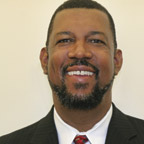Workforce Trends in This Recession

The economic crisis has had a profound effect on communities around the world. The International Labor Organization says worldwide job losses could reach 50 million by the end of 2009. Nationally, the number of job losses and persons who completed temporary jobs rose by 732,000 in May to 9.5 million. According to the U.S. Bureau of Labor Statistics (BLS), this group has increased by 5.8 million since the start of the recession in December 2007. In the Peoria Metropolitan Statistical Area (MSA), nearly 8,000 job losses have been reported since October 2008, yet the Peoria MSA’s April 2009 unemployment rate of 9.2 percent remains below Illinois’ unemployment rate (9.4%).
With the recession poised to become the longest since World War II, two trends are beginning to emerge. In every age group, the male unemployment rate is at or near the post-war high, and for the first time in American history, women are poised to surpass men on the nation’s payrolls.
Unemployment rates for men are rising at a faster pace than women, no matter what their education or age. Nationally, the unemployment rate for men is 9.8 percent, compared to 7.5 percent for women. Looking at worker ages also shows a disturbing trend, especially for men in the prime of their careers. Men aged 45 to 54 have had an unemployment rate of 7.1 percent over the past two months, which exceeds the previous record of seven percent set in 1983. By contrast, women aged 45 to 54 have a 5.7-percent unemployment rate.
The percentage of families supported by women tends to rise slightly during recessions. Past recessions have seen women charging into the workforce, most notably during World War II, but the proportion of women who are working has changed very little in this recession. According to BLS, 82 percent of the jobs lost since last November were held by men. The majority were in industries that have a high percentage of male employees, such as manufacturing and construction. Women tend to be employed in industries that are more likely to be “recession-proof,” such as education and healthcare. As of last March, women constituted 49.7 percent of the workforce. Many economists predict that by August 2009, women will cross the 50-percent threshold for the first time.
Although it appears women may be “safer” in their jobs, it is often more difficult for them to support a family. Women work fewer overall hours than men, are more likely to work part-time jobs without health insurance and tend to work in occupations that pay less than those dominated by men. According to Women Work!, females in full-time jobs, earn 80 cents for each dollar of their male counterparts’ income. This complicates the picture, especially during a recession.
As this recession lingers, it begins to threaten the stability of many families who are looking at a very different future than they had planned. And yet, a recession can provide individuals an opportunity to reflect on their future. Researching local labor market information and workforce trends can assist them in finding high-growth careers that will survive future economic turmoil. As the economy recovers, local employers will be looking for high-skilled workers in the fields of healthcare; transportation and logistics; advanced manufacturing that may include “green” components, such as the manufacturing of wind turbines or its parts; and in the “new” construction industry where energy efficiency in design, build and retrofit will be a requirement in the future. Training for these high-growth occupations now can help you to be work-ready for the economic recovery. iBi

